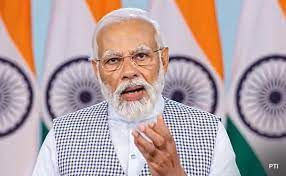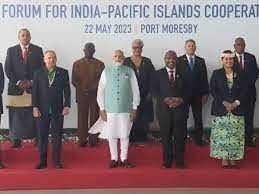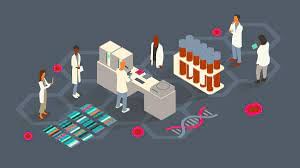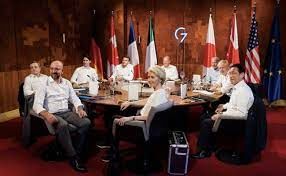UPSC Daily Current Affairs- 22nd May 2023 | Current Affairs & Hindu Analysis: Daily, Weekly & Monthly PDF Download
GS-I
Neh Pema Shelphu Shrine
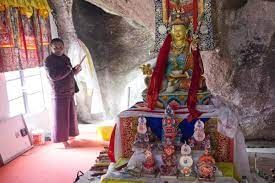
Why in News?
The landowner of a disputed area in Arunachal Pradesh has demanded either compensation from Army for a land where Army has built Gurdwara near the Neh Pema Shelphu Shrine.
Neh Pema Shelphu Shrine
- It is a holy shrine located in the Mechukha Valley of Arunachal Pradesh.
- It holds significant religious importance for the local Memba Buddhist community.
- The shrine is believed to have been sanctified by Guru Padmasambhava, a prominent figure in Tibetan Buddhism, during his exploration of the area in the 8th century AD.
- It has been a place of worship and pilgrimage for the Memba people since 1274 AD, according to historical records.
- It attracts hundreds of Buddhists who visit the shrine annually during a pilgrimage in March.
Source: PIB
World Health Meet: PM Modi for Equity in Health Care
Why in News?
Prime Minister Narendra Modi virtually addressed the 76th World Health Assembly in Geneva.
- While congratulating the organisation for “serving the world for 75 years”, PM Modi said the Covid-19 pandemic showed that there was a need for greater collaboration and health equity.
About World Health Assembly:
- The World Health Assembly is the decision-making body of World Health Organization (WHO).
- It is attended by delegations from all WHO Member States and focuses on a specific health agenda prepared by the Executive Board.
- The main functions of the World Health Assembly are to –
- Determine the policies of the Organization,
- Appoint the Director-General,
- Supervise financial policies, and
- Review and approve the proposed programme budget.
- The Health Assembly is held annually in Geneva, Switzerland.
About World Health Organization (WHO):
- Founded in 1948, WHO is a United Nations agency that connects nations, partners and people to promote health, keep the world safe and serve the vulnerable.
- It provides technical assistance to countries, sets international health standards, and collects data on global health issues.
- The WHO has played a leading role in several public health achievements, most notably the –
- Eradication of smallpox, the near-eradication of polio, and the development of an Ebola
- Its World Health Assembly, the agency's decision-making body, elects and advises an executive board made up of 34 health specialists.
- The WHO relies on contributions from member states (both assessed and voluntary) and private donors for funding.
- Its publication, World Health Report, provides assessments of worldwide health topics.
News Summary:
- Prime Minister Narendra Modi attended the 76th World Health Assembly in Geneva, virtually.
- While congratulating the organisation for “serving the world for 75 years”, he said the pandemic showed there was a need for greater collaboration and health equity.
- He mentioned that India showed its commitment towards international cooperation during the pandemic by shipping 300 million vaccine doses to over 100 countries.
- PM highlighted the gaps in the global health architecture which were exposed during the covid-19 pandemic and emphasized the need for a collective effort in building resilient global systems and boosting global health equity.
- He said that the role of WHO is more important for the challenges that lie ahead in the future.
- He said that supporting equal access to resources should be the top priority for the WHO in the coming years.
- Last year, India established WHO’s first Global Centre for Traditional Medicine.
About WHO Global Centre for Traditional Medicine:
- WHO Global Centre for Traditional Medicine is established to support WHO’s efforts to implement the WHO Traditional Medicine Strategy 2014-2023.
- The WHO strategy aims to support Member States in developing proactive policies and implementing action plans that will strengthen the role traditional medicine plays in keeping populations healthy.
- The first WHO GCTM in the world has been established in Jamnagar, Gujarat under the Ministry of AYUSH.
Source: The Hindu
GS-II
Preventing the Erosion of Civil Society Independence
Why in News?
The civil society process of G-20, known as C-20, which is meant to provide a platform for independent voices and hold governments accountable, has been co-opted by the ruling party in India. Critiques argue that under the guise of civil society representation, C-20 has become a tool to further a politico-religious vision and legitimize neoliberal economic policies. This distortion of C-20 raises concerns about its credibility and ability to serve as a counter-balance to undue business influence.
What is C-20?
- C-20 refers to the civil society process of the Group of Twenty (G-20) summit.
- The C-20 process provides a platform for civil society organizations to engage with G-20 member governments, discuss relevant issues, and advocate for policy changes.
- It aims to ensure that the voices and concerns of civil society are taken into account in the decision-making processes of G-20.
- C-20 focuses on economic, social, and cultural issues, and its participants include non-governmental organizations, grassroots movements, and other civil society actors.
What are the concerns about C-20 ‘s credibility?
- Politicization: The C-20 process in India has been co-opted by the party in power, using it as a platform to further its own politico-religious vision. This raises questions about the independence and neutrality of the civil society process.
- Lack of diversity: The composition of C-20 has raised concerns about the overwhelming presence of members from a single religion, which goes against the principle of inclusiveness. The dominance of a particular religious group undermines the diversity and representation of civil society voices.
- Censorship and suppression: There have been instances of censorship and attempts to control the narrative within C-20. Participants have been asked to refrain from making political statements about G-20 and C-20, limiting their ability to critically address policies and actions that may be detrimental to biodiversity and community interests.
- Limited influence: The C-20 process, along with other engagement forums of G-20, has not been allowed to play an independent role in holding governments accountable or countering undue business influence. The influence of civil society in shaping G-20 decisions and policies remains limited.
- Lack of transparency: The selection and decision-making processes within C-20 have been criticized for lacking transparency. The way the C-20 architecture is set up, with its Secretariat housed in a civil society organization linked to a particular political ideology, raises concerns about the independence and fairness of the process.
Impact of using international engagement forums for political gains?
- Undermining credibility: When international engagement forums, such as the G-20 and its civil society process, are used for political and electoral gains, it undermines their credibility and purpose. These platforms are meant for meaningful dialogue, collaboration, and decision-making on global issues, and politicizing them for short-term domestic interests erodes their legitimacy.
- Diminishing trust and cooperation: Political exploitation of international engagement forums can lead to a breakdown of trust and cooperation among participating countries and civil society organizations. It creates an atmosphere of suspicion and undermines the spirit of mutual respect and collaboration that these forums are intended to foster.
- Weakening global governance: The instrumentalization of international engagement forums for political gains can weaken global governance mechanisms. It hampers the ability of these forums to address pressing global challenges effectively and make informed decisions based on the common good, as decisions may be driven by narrow political considerations rather than sound policy-making.
- Impact on international reputation: The misuse of international engagement forums can have a negative impact on a country’s international reputation. It may be seen as a breach of trust and an attempt to manipulate global platforms for domestic political purposes, damaging the country’s standing in the international community.
- Impeding progress on global issues: When international engagement forums are exploited for political and electoral gains, the focus shifts from addressing global issues to advancing narrow domestic agendas. This can hinder progress on crucial matters such as climate change, sustainable development, poverty alleviation, and human rights, which require international collaboration and concerted efforts.
- Alienating civil society: The politicization of international engagement forums can alienate civil society organizations and undermine their trust in the process. When civil society voices are co-opted or marginalized for political gains, it weakens their role as independent actors, reduces their influence, and stifles their ability to contribute meaningfully to global policy discussions.
- Loss of long-term benefits: Prioritizing short-term political and electoral gains over the long-term benefits of meaningful international engagement can lead to missed opportunities for economic, social, and diplomatic advancements. It undermines the potential for constructive dialogue, knowledge sharing, and collaboration that can yield positive outcomes for the country and the global community.
Way ahead: Addressing the concerns over C-20
- Enhance transparency and inclusiveness: There should be greater transparency in the selection processes of C-20 members and the decision-making mechanisms. Efforts should be made to ensure diverse representation from different religions, ideologies, and sectors, fostering inclusivity and avoiding the dominance of any particular group.
- Safeguard independence: Measures should be taken to ensure the independence of C-20 from government influence. The Secretariat and coordination should be entrusted to neutral and independent organizations or institutions that have a proven track record of upholding the principles of civil society engagement.
- Strengthen civil society networks: Civil society organizations should strengthen their networks, collaborations, and solidarity to amplify their voices and advocate for meaningful engagement in the C-20 process. This can involve building alliances with other organizations, sharing information and resources, and collectively advocating for the principles of inclusiveness and accountability.
- Promote critical dialogue: Open and constructive dialogue should be encouraged within C-20, allowing for diverse perspectives and critical analysis of G-20 policies and actions. Participants should have the freedom to raise concerns, offer alternative viewpoints, and contribute to the discourse without fear of censorship or reprisal.
- Advocate for policy coherence: Civil society organizations should actively engage in advocacy and policy dialogue with both the government and international bodies like the G-20. They should highlight the need for policy coherence that integrates social, environmental, and economic dimensions, ensuring that biodiversity conservation, sustainability, and the rights of marginalized communities are prioritized.
- Strengthen public awareness: Efforts should be made to increase public awareness about the G-20 and its civil society process, including C-20. This can involve disseminating information, organizing awareness campaigns, and facilitating public participation in discussions and decision-making processes.
- International solidarity: Civil society organizations in India should foster collaborations and exchanges with international civil society networks and organizations working on similar issues. Sharing experiences, strategies, and best practices can strengthen the collective voice of civil society globally and exert pressure for more accountable and inclusive processes.
Conclusion
The co-optation of C-20 by the ruling party in India has undermined its credibility as an independent civil society platform. Civil society organizations participating in C-20 must reflect on whether they will legitimize this distortion or challenge it, as their decisions will shape the future of this crucial platform for global dialogue and accountability.
Source: The Hindu
Strengthening Quad: The Need for a Biomanufacturing Hub in India
Why in News?
The Quad, comprised of Australia, India, Japan, and the United States, established a Critical and Emerging Technology Working Group in March 2021 to foster collaboration and explore opportunities in critical and emerging technologies, including biotechnology. However, there remains untapped potential for Quad cooperation in the field of biotechnology. The need of the hour is to establish a Quad-led biomanufacturing hub in India to enhance cooperation and leverage the complementary strengths of Quad nations.
What is QUAD’s Critical and Emerging Technology Working Group?
- The Quad’s Critical and Emerging Technology Working Group is a collaborative initiative established by the Quad countries.
- It was formed in March 2021 with the aim of facilitating cooperation, monitoring trends, and exploring opportunities related to critical and emerging technologies. The working group focuses on identifying and addressing key issues and challenges in areas such as biotechnology, artificial intelligence, cybersecurity, quantum technologies, and other cutting-edge fields.
- It serves as a platform for the Quad countries to share expertise, exchange information, and coordinate efforts in order to harness the potential of these technologies for economic growth, national security, and societal development.
- For instance, in the field of 5G, the Quad members have worked on developing telecommunications networks to counter the pervasive presence of China’s Huawei through the use of open radio access (O-RAN) networks.
What is mean by Biomanufacturing?
- Biomanufacturing refers to the use of biological systems, such as living organisms (microorganisms, cell cultures, or plants), to produce commercially valuable products on a large scale. It involves harnessing the power of biological processes and utilizing them in industrial applications.
- In biomanufacturing, living organisms are employed as “factories” to perform specific tasks or produce desired molecules. These organisms can be genetically engineered or naturally occurring, depending on the desired outcome.
- The organisms are cultivated in controlled environments, such as bioreactors, where they are provided with optimal conditions for growth and production. They are fed with specific nutrients, and their growth and metabolic activities are carefully regulated.
- Biomanufacturing can encompass a wide range of products, including pharmaceuticals, enzymes, biofuels, specialty chemicals, biomaterials, and more.
- Biomanufacturing is often more sustainable and environmentally friendly, as it relies on renewable resources and has the potential to reduce waste and pollution.
Why India stands as the ideal choice to host the biomanufacturing hub?
- India’s ambition of biomanufacturing: India’s National Biotechnology Development Strategy sets a target of reaching $100 billion in the biomanufacturing sector.
- Existing Infrastructure: India already has existing infrastructure in place, including pharmaceutical manufacturing facilities and research institutions, that can be utilized to establish and expand biomanufacturing capabilities. This infrastructure provides a solid foundation for the development of a biomanufacturing hub.
- Pharmaceutical Manufacturing Expertise: India has a long-standing reputation as a major player in the global pharmaceutical industry. The country has established expertise in manufacturing and quality control processes, which can be leveraged for biomanufacturing. The experience gained in pharmaceutical manufacturing can be applied to biomanufacturing, ensuring compliance with regulatory standards and maintaining high-quality production.
- Skilled Workforce: India possesses a large pool of skilled professionals in the life sciences and biotechnology sectors. The country’s workforce includes scientists, engineers, and technicians with expertise in various aspects of biomanufacturing. This skilled workforce can contribute to the success of the biomanufacturing hub by driving research, development, and production activities.
- Research Output: India has demonstrated its research capabilities in biomanufacturing, ranking high in terms of the quality of research output and the share of research publications. The country’s strong research base provides a solid foundation for innovation and advancements in biomanufacturing processes and technologies.
- Cost-Effectiveness: India has a competitive advantage in terms of cost-effectiveness. The cost of manufacturing in India is generally lower compared to countries like the United States, making it an attractive destination for cost-efficient biomanufacturing. This cost advantage can contribute to the affordability and accessibility of biomanufactured products.
- Potential for Affordable Scale: India has the potential to provide affordable scalability in biomanufacturing processes. With its large population and manufacturing capabilities, India can meet the demand for biomanufactured products on a large scale, leading to cost-effective production and availability of essential biopharmaceuticals and other biotechnological products.
Complementary Strengths of Quad Nations
- Advanced Biotechnology Innovation Ecosystems: Japan, Australia, and the United States have well-established and advanced biotechnology innovation ecosystems. These ecosystems comprise research institutions, universities, biotech companies, and startups that drive innovation and technological advancements in biotechnology.
- Funding Capability: The United States, being one of the Quad nations, brings significant funding capability to the table. The U.S. government and private sector invest heavily in research, development, and commercialization of biotechnology.
- Skilled Workforce: India, as a Quad member, offers a large pool of skilled manpower, particularly in the life sciences field. Collaborative efforts can facilitate knowledge sharing and capacity building to enhance the skills of the workforce across the Quad nations.
- Manufacturing and Scale-Up Capabilities: India has well-established pharmaceutical manufacturing capabilities. The country has a robust infrastructure and expertise in large-scale production, which can be harnessed for biomanufacturing purposes.
- Intellectual Property and Technology Transfer: The Quad nations, particularly Japan and the United States, have strong intellectual property protection systems and expertise in technology transfer. Sharing intellectual property and facilitating technology transfer can accelerate the development and commercialization of biomanufacturing technologies, benefiting all Quad nations.
- Research Output and Innovation: All Quad nations contribute significantly to global research output in the field of biotechnology. They produce high-quality research publications and drive innovation in various subfields of biotechnology. Collaboration within the Quad can facilitate knowledge exchange, joint research projects, and the development of innovative solutions in biomanufacturing.
Way ahead
- Collaborative Research and Development: Foster collaborative research and development initiatives between the Quad nations and India. This can involve joint projects, knowledge sharing, and technology transfer to accelerate the development of biomanufacturing processes, products, and technologies.
- Capacity Building and Skill Development: Establish training programs, workshops, and exchange programs to enhance the skills and knowledge of professionals in biomanufacturing. This can include specialized training in areas such as advanced bioprocessing techniques, quality control, regulatory compliance, and technology transfer.
- Infrastructure Investment: Allocate resources for infrastructure development, including the establishment of specialized bioreactor facilities, research centers, and manufacturing capabilities.
- Regulatory Framework Alignment: Collaboratively work towards aligning regulatory frameworks among the Quad nations and India. This involves harmonizing regulations, streamlining approval processes, and ensuring consistent quality standards.
- Public-Private Partnerships: Foster public-private partnerships to leverage the expertise, resources, and capabilities of both sectors. Engaging industry stakeholders, academia, research institutions, and government agencies in collaborative initiatives can drive innovation, facilitate technology transfer, and accelerate the commercialization of biomanufactured products.
- International Collaboration: Explore collaborations beyond the Quad nations to foster international cooperation in biomanufacturing. Engaging with countries outside the Quad can expand opportunities for knowledge exchange, market access, and research collaboration.\
Source: The Hindu
FIPIC Summit, 2023
Why in News?
Recently, Prime minister of India meets with Pacific Island nation leaders on sidelines of FIPIC Summit in Papua New Guinea.
About FIPIC:
- Forum for India-Pacific Islands cooperation (FIPIC) is a multinational grouping for cooperation between India and 14 Pacific Islands nations.
- It include 14 islands named- Cook Islands, Fiji, Kiribati, Marshall Islands, Micronesia, Nauru, Niue, Samoa, Solomon Islands, Palau, Papua New Guinea, Tonga, Tuvalu and Vanuatu.
- All Head of state/head of government of the above countries met in Suva, Fiji in November 2014 for the first time where the annual summit was conceptualised.
- The FIPIC initiative marks a serious effort to expand India's engagement in the Pacific region.
- A major part of India's engagement with these countries is through development assistance under South-South Cooperation, mainly in capacity building (training, scholarships, grant-in-aid and loan assistance) and community development projects.
- In 2015, FIPIC Trade Office at Federation of Indian Chambers of Commerce & Industry (FICCI) to promote Trade & Investment opportunities between India & Pacific Island Countries.
Source: Indian Express
GS-III
Orang National Park
Why in News?
Recently, one old age Rhino dies due to infighting in Orang National Park and tiger reserve.
About Orang National Park:
- It is located on the north bank of the Brahmaputra River in the Darrang and Sonitpur districts of Assam, India.
- It was established as a sanctuary in 1985 and declared a National Park in April 1999.
- It spreads over an area of 78.80 sq. kms.
- It is also a Tiger Reserve (49th)of the country which was notified in 2016.
- It is also known as the mini Kaziranga National Park (IUCN site) since the two parks have a similar landscape made up of marshes, streams and grasslands and are inhabited by the Great Indian One-Horned Rhinoceros.
- Fauna:
- The park has a rich fauna, including Great Indian One-Horned Rhinoceros, pigmy hog, elephants, wild buffalo and tigers.
- Here 222 species of Birds have so far been recorded, some of which are- Spot Billed Pelican, White Pelican, Greater Adjutant Stork, Lesser Adjutant Stork, Brahminy Duck, Bengal Florican etc.
- Reptiles: Indian Rock Python, Black Krait, King Cobra, Cobra, Monitor Lizard.
- Flora: Natural Forest including species of Sterculia Villosa, Zizyphus Jujuba, Dalbergia Sissoo, Bombax Ceiba, Litsaea Polyantha; Non-Aquatic Plants etc.
Source: The Hindu
Understanding a Human Pangenome Map
Why in News?
A study published in the Nature journal presents a pangenome reference map built using genomes from 47 anonymous individuals.
- The individuals included in the study are from various regions, including Africa, the Caribbean, Americas, East Asia, and Europe.
Understanding Genomes and Reference Genomes
- The genome refers to the collection of all genes and regions between genes found in our chromosomes.
- Each chromosome is composed of millions of nucleotides (A, T, G, and C) arranged in different combinations.
- Genome sequencing helps understand genetic diversity and susceptibility to diseases.
- A reference genome is a map used to compare newly sequenced genomes and identify differences.
- The first reference genome, created in 2001, had limitations and did not represent human diversity accurately.
What is Pangenome Map?
- The new study focuses on building a pangenome map, which is a graph representing genetic diversity among individuals.
- Pangenome maps use long-read DNA sequencing technologies to assemble sequences accurately.
Importance of Pangenome Map
- Although humans are more than 99% similar in their DNA, there is still a 0.4% difference between individuals.
- A complete and error-free pangenome map helps understand genetic differences and human diversity.
- It aids in identifying genetic variants linked to health conditions, such as the discovery of 150 new genes associated with autism.
- The current pangenome map lacks representation from certain populations, including Indians.
Implications for Indian Genomes
- The pangenome map, despite not including Indian genomes, will assist in mapping Indian genomes against existing reference genomes.
- Future pangenome maps with Indian genome data will provide insights into disease prevalence, rare gene discovery, diagnostic methods, and drug development.
Source: The Hindu
Group of Seven (G7): Climate wishlist and the realities of efforts to cap warming
Why in News?
The G7 group has repeatedly acknowledged the urgency for effective climate action but offered little in terms of scaled-up action.
The Group of Seven (G7)
- It is an intergovernmental informal political forum of 7 wealthy democracies formed in 1975.
- It consists of Canada, France, Germany, Italy, Japan, the United Kingdom and the United States.
- The heads of government of the member states, as well as the representatives of the European Union (non-enumerated member), meet at the annual G7 Summit.
- The 49th annual G7 Summit is hosted by Japan.
- As of 2020, G7 accounts for over half of global net wealth (at over $200 trillion), 30 to 43% of global GDP and 10% of the world's population.
Need for Effective Climate Action:
- A series of recent reports have once again sounded the red alert on climate change, saying that the window of opportunity for effective action was narrowing faster than ever before.
- For example, the World Meteorological Organisation (WMO) said the 1.5-degree Celsius threshold was likely to be breached (at least temporarily) over the next five years.
- According to some other studies, 2023 is on track to become the warmest ever, surpassing 2016.
- The recent heat wave in India and neighbouring countries was almost certainly due to climate change. The probability of its occurrence has increased at least 30 times by global warming.
- These reports called for an immediate scale-up of climate action. However, the response does not seem to be able to keep pace.
The G7 Climate Ministers Meeting:
- The meeting of the group of rich and developed nations with the economic heft to create the necessary momentum for global change, presents the latest example of the response gap.
- In its final communique (in Hiroshima, Japan), the G7 listed a set of milestones that need to be achieved for a realistic chance of containing the global rise in temperatures to within 1.5 degree Celsius.
Milestones Listed by the G7 for Effective Climate Action:
- Seeking a global peak in GHG emissions by 2025:
- The G7 claimed that their emissions had already “peaked”, and asked all major economies to ensure that their individual emissions do not continue to rise beyond 2025.
- “Major economies” is not defined, but in the context of climate change, it usually includes countries like India, China, Brazil, South Africa, and Russia.
- Net-zero by 2050:
- According to scientific claims, the world as a whole must become net zero by mid-century in order to meet the 1.5C target.
- The G7 reiterated its commitment to turn net-zero by 2050, and asked all ‘major economies’ to attain net-zero status by that year and to come up with detailed road maps to reach the target.
- Accelerating the phase-out of “unabated fossil fuels” in line with 1.5C trajectories:
- G7 said that they would eliminate “inefficient fossil fuel subsidies” by 2025.
- For example, the G7 claimed they had stopped financing new fossil fuel-based energy projects “except in limited circumstances”. These circumstances include the need to end the dependence on Russian gas.
Challenges in the path of Achieving these Milestones:
- A global peak by 2025 is difficult:
- The biggest emissions year so far has been 2019 (about 55 billion tonnes of carbon dioxide equivalent). After a dramatic drop in 2020 due to the Covid-19 pandemic, emissions rose again in 2021.
- The 2025 peak year is not mandated under the Paris Agreement or any other international decision.
- India has long made it clear that it sees its emissions growing well into the next decade. Even China, the world’s largest emitter, has indicated that it would peak only towards the end of this decade.
- Most of the rich and industrialised nations are now seeing a decline, though not at the required pace.
- Net-zero by 2050:
- Among the major emitters (US, EU), only Germany has said it would attain net-zero status by 2045.
- China has said it would turn net-zero only in 2060, while India has set 2070 as the target. Some other countries, including big emitters like Russia and Saudi Arabia, have 2060 as their net-zero targets.
- End to fossil fuels:
- The G7 countries put no deadline to ending the use of fossil fuels.
Way ahead:
- With fast changing technologies, and rapid adoption of cleaner sources of energy, the situation could alter significantly over the next decade.
Source: The Hindu
|
38 videos|5293 docs|1118 tests
|


